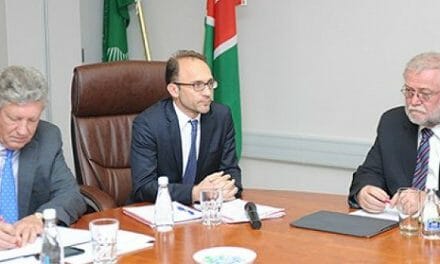
Whither interest rates?
Just about when every investment manager has factored in a 60% possibility for another 0.25% Repo Rate increase by the South African Reserve Bank, the Federal Reserve in the US throws us a curved ball by not raising rates.
The expectations in the South African market proved to be correct when the SA Reserve Bank Governor, Lesetja Kganyago on Thursday raised the Repo Rate by the expected 0.25%, taking it to 7%. This almost certainly guarantees another 0.25% increase in the Namibian Repo Rate since the central bank, after its previous Monetary Policy Committee meeting, stated that local rates had to rise to remain synchronised with regional rates.
But the Federal Reserves’ decision to delay the interest rate cycle, brought an unprecedented measure of complexity to monetary conditions. The Fed’s decision immediately lead to a flurry of responses in the US market for instance the slight weakening of the US Dollar and a marked appreciation in both the Yen and the Euro. The share markets responded in a similar fashion with the Dow Jones Industrial Index coming very close to making up for the losses of the first two months of this year.
Amongst market analysts, there is a strong conviction that higher short-term US interest rates will eventually spill over to longer dated instruments. This looked set to happen with longer dated yields improving from around 1.7% to just over 2% but by Thursday, they have fallen back to 1.9%.
But while the world’s big financial and monetary wheels are turning, we have to find a space to ensure our own future.
The conventional wisdom during the almost 26 years since independence was that Namibian rates had to be anything between 1.5 and 2 percentage points higher than South Africa. If it were not so, the more liquid and better developed market in SA, tended to drain liquidity from the Namibian market. But this was in the time when most Namibian financial institutions were simply vassals of their South African overlords, and when local players contributed only negligibly to local liquidity. During that same period inflation was also much higher than now and short term rates typically vacillated between 12% and 16%. Since the financial crisis, we have moved to interest rates that are tolerable, and at one point in the downward cycle we had the lowest prime rates in almost forty years. But with the South African government’s total debt hovering at around 65% of Gross Domestic Product, and inflation gaining traction as the external value of the Rand deteriorated, there was not much else the SA Reserve Bank could do. All indications are that we are set for a prolonged phase of rising rates, and there is also not much the Bank of Namibia can do. As the big dog barks, we have to follow the noise.
I see the expectation for rising rates reflected also in the local commercial banks’ rhetoric. Whereas credit extension was in vogue, as recently as the second semester of 2015, the banks have made a drastic about face and now reminds us at every possible opportunity, to cut debt and to start saving. That is expected advice from institutions who are in the loop, knowing with a degree of certainty that we are moving into a lean phase.
Still, if the advanced economies have put the brakes temporarily on higher rates, where does it leave us?
It is always a matter of concern when local conditions are out of sync with the bigger players. Towards the second half of last year, I noticed that our monetary space was shrinking therefore it was a logical conclusion that local rates must rise although at that point there were very few concrete pointers what the tempo and the increments will be. As it transpired, the increments are small but the pace has picked up a notch or two. Rising rates were then seen as a means to stay ahead of the international curve. I believe a similar sentiment was expressed by the Indian finance minister. However, if the pace in the rest of the world slows, but here picks up, then it means the slightest further increases in US rates will have dramatic effects on local markets, and especially on the exchange rate.
If the stooges in South Africa continue to destroy their own reputation we may end up paying for their sins and redemption will not be cheap.











































